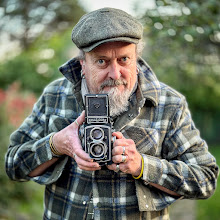
'Anglicizing an Austrian’
aka ‘transforming a smart Austrian, into a rusty, old & possibly English style leaking wheezer geezer’.
Having thoroughly enjoyed the feature by in a recent 009 Socielty Newsletter on how to anglicise the Bachmann Liliput HO Zillertal Bahn 2-6-2 a couple of months ago in 009 News, I remembered that I had one of these locomotives hidden in the garage collecting dust.
It was from one of those spur of the moment purchases a couple of years before, probably because I feared it was going out of production.
Anyway, back to the conversion, I followed the instructions as in 009 News closely as possible as my spare parts box allowed, using plasticard to deepen the body and to revise the cab windows to something more British is style.
I then had to improvise, not having a suitable smokebox door, I removed the flat head from a drawing pin, this becoming the door! A hole was drilled into the middle to take and old handrail knob from a Kays kit (there must be hundreds of these dreadful kits never finished?) and a pin head to act the lever for opening it.

Further handrail knobs and bits of brass wire were used for the cabside handrails. British locos have less in the way of steam spaghetti than their foreign counterparts, so some of those bits were removed (I’m non technical, I know steam locos use coal, fire and water, that’s about it!). Some thin beading was added along the edges of the side tank tops from fine plastic strip. Then, some coal rails were added at the cab end of the tanks, after seeing a picture of the Former Welsh Highland Railway loco ‘Russell’ in a book of ‘The Railways of Purbeck’ by the late R.W. Kidner. The little loco then had a couple of ‘buffer beams’ added out of some spare girder section from a Walther’s Cornerstone building kit for that real DIY bodged repair often seen on industrial loco’s. I’ve always liked industrial grot over twee pretty engines, I think it would be true to say that it has been achieved here!
That’s just about it, the loco was then sprayed matt black from an aerosol, had brass elliptical maker’s plate from a Class 52 Western of all things! It was then weathered up in my usual fashion using matt colour washes and dry brushing, until it started to look suitably decrepit.

Whilst I’m not sure it looks totally British in style, it maybe could pass as something UK built for export to the colonies. My story is that it came back from war torn France after the Great War.
The loco, after a good couple of hours running round and round Arne Wharf (where it really looks the part I hasten to add), runs beautifully. The only problem is that due to the large overhand and my tight curves, most stock, irrespective of which way around the loco is facing, tends to get pulled off the rails on the bends! Oh well, better build another layout!
 "Most of us would secretly quite like a model railway layout, especially when you see these attractive little scenes created by the railway photographer Chris Nevard."
"Most of us would secretly quite like a model railway layout, especially when you see these attractive little scenes created by the railway photographer Chris Nevard." 









